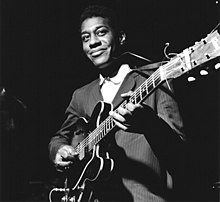
Joe Pass was an American jazz guitarist. Although Pass collaborated with pianist Oscar Peterson and vocalist Ella Fitzgerald, his status as one of the most notable jazz guitarists of the 20th century is generally attributed to his work on his solo albums, such as Virtuoso.

Blue Note Records is an American jazz record label now owned by Universal Music Group and operated under Capitol Music Group. Established in 1939 by German-Jewish emigrants Alfred Lion and Max Margulis, it derived its name from the blue notes of jazz and the blues. Originally dedicated to recording traditional jazz and small group swing, the label began to switch its attention to modern jazz around 1947. From there, Blue Note grew to become one of the most prolific, influential and respected jazz labels of the mid-20th century, noted for its role in facilitating the development of hard bop, post-bop and avant-garde jazz, as well as for its iconic modernist art direction.
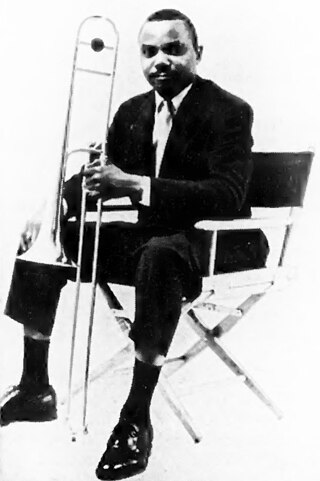
J. J. Johnson, born James Louis Johnson and also known as Jay Jay Johnson, was an American jazz trombonist, composer and arranger.

Charles Henry Christian was an American swing and jazz guitarist. He was among the first electric guitarists and was a key figure in the development of bebop and cool jazz. He gained national exposure as a member of the Benny Goodman Sextet and Orchestra from August 1939 to June 1941. His single-string technique, combined with amplification, helped bring the guitar out of the rhythm section and into the forefront as a solo instrument. For this, he is often credited with leading to the development of the lead guitar role in musical ensembles and bands.

Frederick Dewayne Hubbard was an American jazz trumpeter. He played bebop, hard bop, and post-bop styles from the early 1960s onwards. His unmistakable and influential tone contributed to new perspectives for modern jazz and bebop.

Henry Mobley was an American tenor saxophonist and composer. Mobley was described by Leonard Feather as the "middleweight champion of the tenor saxophone", a metaphor used to describe his tone, that was neither as aggressive as John Coltrane nor as mellow as Lester Young, and his style that was laid-back, subtle and melodic, especially in contrast with players such as Coltrane and Sonny Rollins. The critic Stacia Proefrock claimed him "one of the most underrated musicians of the bop era." Mobley's compositions include "Double Exposure", "Soul Station", and "Dig Dis".

Eli "Lucky" Thompson was an American jazz tenor and soprano saxophonist whose playing combined elements of swing and bebop. Although John Coltrane usually receives the most credit for bringing the soprano saxophone out of obsolescence in the early 1960s, Thompson embraced the instrument earlier than Coltrane.
Johnny Henry Smith II was an American cool jazz and mainstream jazz guitarist. He wrote "Walk, Don't Run" in 1954. In 1984, Smith was inducted into the Alabama Jazz Hall of Fame.

Harold Floyd "Tina" Brooks was an American jazz tenor saxophonist and composer best remembered for his work in the hard bop style.

James Stanley Hall was an American jazz guitarist, composer and arranger.
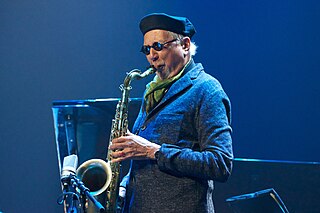
Charles Lloyd is an American jazz musician. He primarily plays tenor saxophone and flute and occasionally other reed instruments, including alto saxophone and the Hungarian tárogató. Lloyd's primary band since 2007 has been a quartet including pianist Jason Moran, acoustic bassist Reuben Rogers, and drummer Eric Harland.

David "Fathead" Newman was an American jazz and rhythm-and-blues saxophonist, who made numerous recordings as a session musician and leader, but is best known for his work as a sideman on seminal 1950s and early 1960s recordings by Ray Charles.
Sam Lazar was an American pianist and Hammond organist originally from St. Louis, Missouri, United States. A mysterious figure who disappeared from the music scene in the early 1960s, he is best known for fronting a group that included early work from guitarist Grant Green. Lazar's career was heavily influenced by fellow organist Jimmy Smith.
Jerry Dodgion was an American jazz saxophonist and flautist.

George Freeman is an American jazz guitarist and recording artist. He is known for his sophisticated technique, collaborations with high-profile performers, and notable presence in the jazz scene of Chicago, Illinois. He is the younger brother of tenor saxophonist Von Freeman and drummer Eldridge "Bruz" Freeman, and the uncle of tenor saxophonist and trumpeter Chico Freeman.

Here 'Tis is an album by jazz saxophonist Lou Donaldson recorded for the Blue Note label in 1961 and performed by Donaldson with organist Baby Face Willette, guitarist Grant Green and drummer Dave Bailey.

Born to Be Blue is an album by American jazz guitarist Grant Green featuring performances recorded in 1962 but not released until 1985 on the Blue Note label. Green is accompanied by tenor saxophonist Ike Quebec, pianist Sonny Clark, bassist Sam Jones and drummer Louis Hayes.
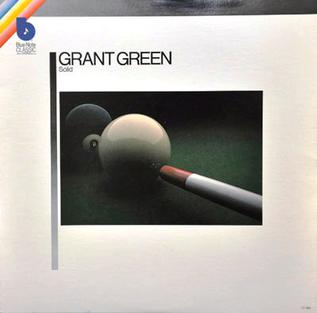
Solid is an album by American jazz guitarist Grant Green, containing performances recorded in 1964 but not released on the Blue Note label until 1979. McCoy Tyner, Elvin Jones and Bob Cranshaw from Green’s previous session are joined by alto saxophonist James Spaulding and tenor saxophonist Joe Henderson.
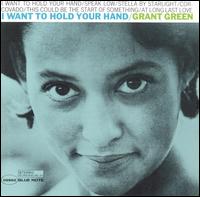
I Want to Hold Your Hand is an album by American jazz guitarist Grant Green featuring performances recorded in 1965 and released on the Blue Note label. Featuring jazz arrangements of pop songs, Green is supported by organist Larry Young and drummer Elvin Jones from his previous sessions, along with tenor saxophonist Hank Mobley.

Blue & Sentimental is an album by American jazz saxophonist Ike Quebec recorded for Blue Note on December 16 & 23, 1961 and released the following year.
